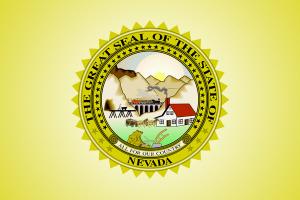Revised Nevada renewable portfolio standards vetoed

The Nevada General Assembly has just completed an especially active session, working on more than half a dozen bills affecting the energy industry in one form or another. Most were sponsored by lawmakers with an eye toward making the state a national leader in advancing clean energy technologies. According to the debate surrounding the various bills, they all were designed to underscore the state's commitment to renewables, conservation, and energy efficiency.
And while most of the bills had the backing of Governor Brian Sandoval, he surprised many by vetoing one proposal that would have placed Nevada at the forefront in setting ambitious renewable energy targets.
The vetoed law, Assembly Bill (AB) 206, would have revised Nevada's renewable portfolio standard (RPS) to provide that a minimum of 40% of all electric usage be supplied by renewable energy by 2030. That represents a marked increase above the existing RPS goal of having 25% of electric sales come from renewable sources by 2025. The current RPS policy was further amended in AB 206 to eliminate a requirement that a certain minimum amount of a utility's generation or purchased power come specifically from solar facilities. Lawmakers introducing AB 206 propounded that the state would benefit from the creation of more opportunities for investments in renewable energy projects, especially solar, given the abundance of rain-free days Nevada enjoys on average each year.
They noted as well that the falling price of solar installations represented the perfect chance for consumers to enter the solar market. Supporters of the bill said that renewed interest in solar projects not only would stimulate Nevada's economy, but also would assure greater diversity in electric generation supply and bring new avenues of employment to the state. The legislators likewise asserted that AB 206 would go hand-in-hand with both Senate Bill (SB) 392, which authorizes the establishment of community solar programs, and AB 405, which resurrects net energy metering for customers with rooftop solar systems. But the governor ultimately vetoed both AB 206 and SB 392, even as he signed AB 405 into law.
In explaining his decision, Governor Sandoval stated that he viewed it as premature to raise the RPS threshold at the present time in light of a pending statewide referendum on a proposed constitutional amendment that would let ratepayers have a choice in their energy supplier.
The governor elaborated that he was persuaded that reinstating net metering under prior pricing guidelines, after a year-long absence, would be an appropriate means for reinvigorating the solar industry in Nevada. He agreed that solar development had lagged following a 2015 decision by the Nevada Public Utilities Commission to eliminate the retail rate basis for net-metered billings for electric service customers with rooftop solar systems.
The governor, in a signing statement, admitted that the solar power industry within Nevada had lost significant business in the last year and that making net metering available again under pricing terms closer to what they had been was likely to spur renewed interest. However, he said, he was not convinced that the provisions of AB 206 and SB 392 were fully compatible with AB 405.
Especially since it is not yet known whether voters in the state will opt to approve the Energy Choice Initiative, the governor said he believed it would be better to err on the side of caution and wait to address both enhanced RPS requirements and community solar policies when and if the retail choice protocol is adopted. As to AB 405, the legislation attempted to mitigate the damage done to the solar power sector by the commission's 2015 order, which reflected a far-reaching change in compensation policies for net-metered customers. In that ruling, the commission embraced utility arguments that thenexisting net metering plans, which paid self-generating customers for their excess output at the otherwise applicable retail rate, had produced unjust cost shifts between net metering participants versus nonparticipants.
The commission thereupon implemented new net metering pricing schedules under which solar customers would be paid for their surplus generation at far lower wholesale market rates instead of retail rates. The commission also directed netmetered customers to begin paying higher fixed fees. That is, the commission allowed jurisdictional utilities to commence differentiating between net metering participants and nonparticipants with respect to the monthly customer charges they pay.
However, the lower price paid for excess solar production, combined with the increased fixed charges, led to a precipitous drop in solar installations across the state. In an effort to jumpstart the industry, the state legislature crafted AB 405, which moves net-metered bills back closer to retail electric rates. More specifically, AB 405 provides that net-metered customers with rooftop solar systems are to be credited for their excess output at 95% of the full retail rate. Over time, though, as solar development reestablishes itself, the percentage of the retail rate would decline, although the bill prohibits the percentage from falling below 75% of the otherwise applicable retail rate.
The lawmakers, joined by the governor, viewed the new net metering schedules as offering significant value and incentives to consumers interested in solar facilities while simultaneously providing utilities with some measure of protection against unfair cost shifts between customer groups. The new law also includes a clause giving net-metered customers an opportunity to lock in their compensation rates, which allows for more certainty and security in their investment decisions. In essence, the guarantee option minimizes the risk that future legislative actions could yet again disrupt solar advancements.
The other energy-related pieces of legislation presented to the governor included AB 223, SB 145, SB 204, and SB 314, all of which the governor signed. The first, AB 223, addressed energy efficiency and conservation and requires electric utilities, when submitting their integrated resource plans to the commission, to budget certain minimum expenditures for energy efficiency and conservation efforts targeted at low-income customers. In SB 145, new incentives for the installation of energy storage facilities were set forth as part of the state's overall solar incentive program. The bill also creates an electric vehicle infrastructure demonstration program. SB 204 likewise centered on energy storage, enacting standards for electric utility procurement of energy storage systems under certain circumstances. Finally, SB 314 is directed at other nonsolar renewable energy technologies, i.e., wind power projects. It eases restrictions that may be placed on wind energy installations by local governing bodies.



